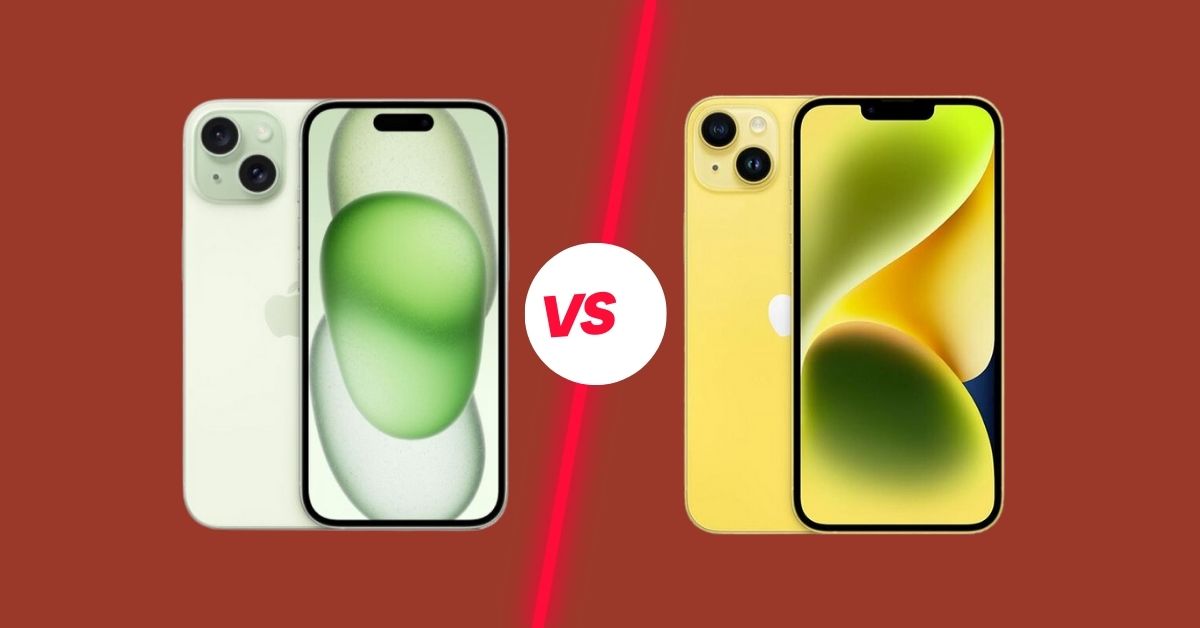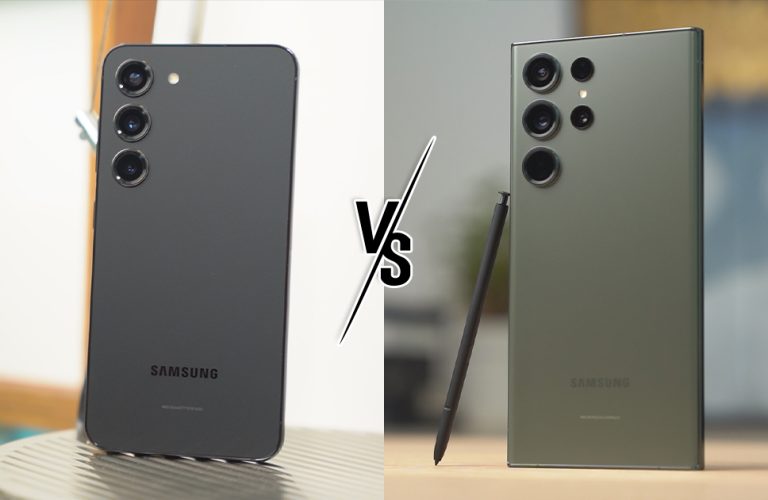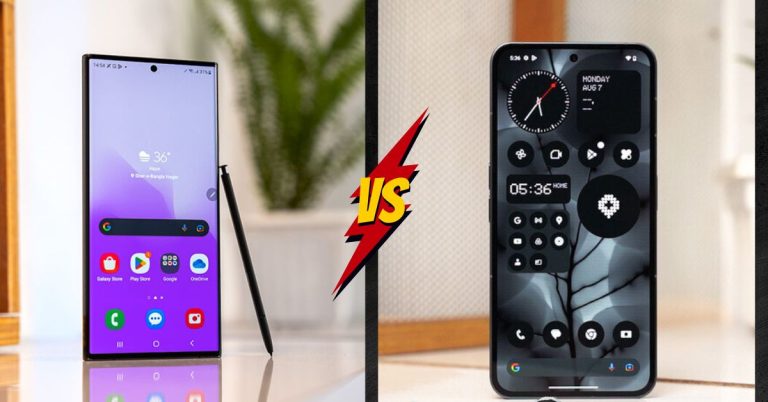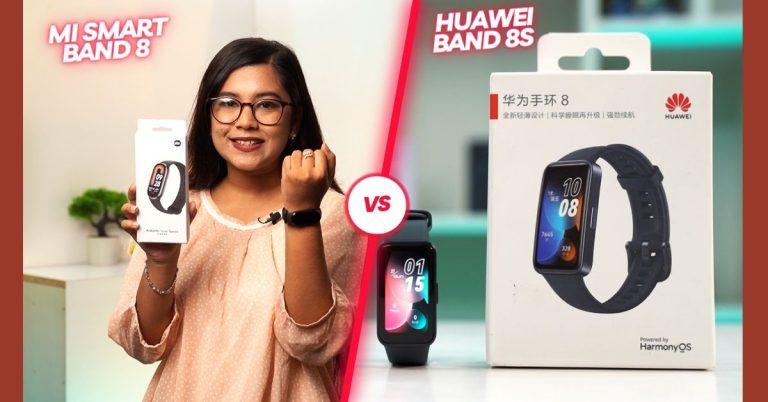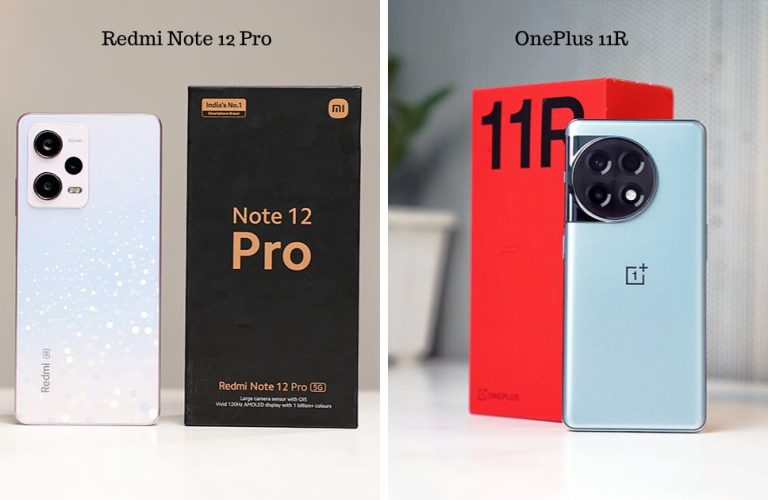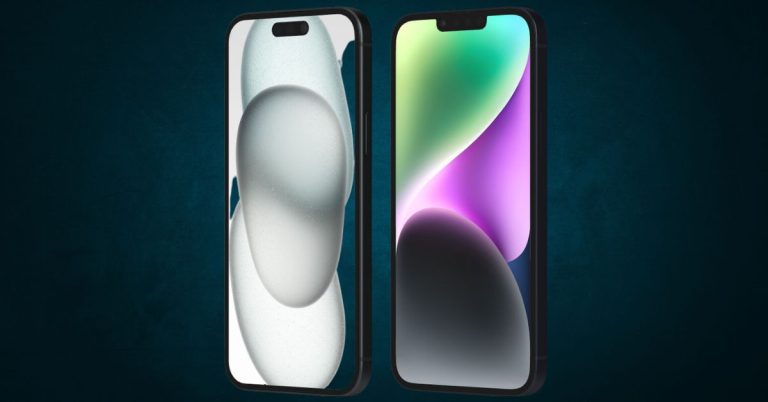iPhone 15 Plus vs iPhone 14 Plus: Bigger, Better, Brighter!
In 2023, the iPhone 15 Plus made a grand entrance with a slew of exciting features, setting the tech world abuzz. One of the most anticipated changes was the adoption of the Type-C port, finally aligning Apple with industry standards.
Additionally, the introduction of the dynamic island, a unique feature across all models, promised enhanced user experiences. Under the hood, a cutting-edge chipset powered all devices, ensuring exceptional performance.
However, the iPhone 14 Plus, released just a year prior, still held its ground with its distinctive advantages. While the iPhone 15 Plus embraces modern connectivity and innovation, the iPhone 14 Plus maintains its appeal as a solid performer in the larger display category.
In this comparison review between the iphone 15 Plus vs iphone 14 Plus, let’s dive a bit deeper into their overall proposition to discern their competitive edge. The battle between these two Plus-sized contenders promises an intriguing showdown.
Table of Contents
1. iPhone 15 Plus vs iPhone 14 Plus: Key Differences
| iPhone 14 Plus | iPhone 15 Plus |
|
|
|
|
|
|
|
|
|
|
Check Latest price of iPhone 15 Plus vs iPhone 14 Plus
2. iPhone 15 Plus vs 14 Plus: Design
When it comes to design and build quality, the iPhone 15 Plus and its predecessor, the iPhone 14 Plus, share a certain degree of continuity. The iPhone 15 Plus maintains a familiar form factor, with a few notable changes. The most prominent is the introduction of the “Dynamic Island” on the display, which eliminates the notch, housing the front camera and sensors within. This alteration results in a more immersive screen experience.

The previous year’s iPhone 14 Plus featured a design reminiscent of previous models. It had a dual-camera setup on the back, a front camera embedded within a notch, and a traditional lightning port for charging.
Its build quality was robust, with an aluminum frame, Ceramic Shield front, and glass back. The device weighed 203 grams, partly due to the larger battery, and offered IP68 water resistance up to 6 meters for 30 minutes.
In comparison, the iPhone 15 Plus maintains the same camera setup and button placements as its predecessor but introduces a new versatile charging solution with the Type-C a pressured decision from Apple forced by the EU. It retains the durable aluminum frame, Ceramic Shield front, and color-infused glass back. The “Dynamic Island” display enhancement not only enhances aesthetics but also functionality by eliminating the notch.
3. iPhone 15 Plus vs 14 Plus: Display
The display is a critical aspect of any smartphone, and Apple has made substantial improvements in this regard with the iPhone 15 Plus compared to its predecessor, the iPhone 14 Plus.

The iPhone 14 Plus boasts a 6.7-inch OLED panel with a resolution of 2778×1284 pixels, offering a sharp and enjoyable viewing experience, especially for movies, thanks to HDR10 and True Tone colors.
However, it retained the notch design, which had become somewhat dated over the years. The peak brightness of 1200 nits was decent but could be limiting for outdoor use.
On the newer side, the iPhone 15 Plus represents a significant leap in display technology. It retains the same 6.7-inch OLED panel but enhances the resolution to 2796×1290 pixels at 460 ppi, providing even crisper visuals. Which is not much, but at least a little improvement from last year.
The game-changer is the removal of the notch, replaced by the “Dynamic Island,” offering a more immersive and modern screen experience. Moreover, Apple boosts outdoor visibility with an impressive 2000 nits peak brightness, a substantial 66% increase over the iPhone 14 Plus’s 1000 nits. The reduced bezel also contributes to an 88% screen-to-body ratio.
4. iPhone 15 Plus vs 14 Plus: Camera
When it comes to camera capabilities, Apple has taken a significant step forward with the iPhone 15 Plus compared to its predecessor, the iPhone 14 Plus.
The iPhone 14 Plus features a 12MP main camera with an f/1.5 aperture, sensor-shift OIS, and the ability to capture excellent photos. However, the portrait mode required manual adjustments, making it less user-friendly.

The 12MP ultrawide camera with an f/2.4 aperture provided a good 120-degree field of view, ideal for wide-angle shots. The 12MP front camera delivered high-quality HDR photos, and both front and back cameras supported 4K video recording.
In contrast, the iPhone 15 Plus introduces a substantial improvement in camera technology. The main camera boasts a significant leap in megapixels, now at 48MP, with an f/1.6 aperture, resulting in wider-angle shots, improved dynamic range, and vibrant colors, thanks to the newer chipset. The addition of Focus and Depth Control (Automatic Portrait) simplifies the portrait mode, automatically recognizing subjects and objects for future editing.
The 12MP ultrawide camera with a 120-degree field of view remains consistent, as does the 12MP front camera with 4K and cinematic 4K capabilities. Video recording quality is still top-notch, with 4K and HDR recording with Dolby Vision, matching the iPhone 14 Plus.
5. iPhone 15 Plus vs 14 Plus: Performance
Performance is a critical aspect when comparing the iPhone 15 Plus and iPhone 14 Plus, and there are notable improvements in the newer model.

The iPhone 14 Plus, released the previous year, featured the A15 Bionic chip, a powerful 5-nanometer processor also seen in the iPhone 13 Pro models. With a Hexa-Core processor consisting of two 3.23GHz performance cores and 4 efficiency cores, it excelled in tasks such as mobile video editing and fps gaming.
The 5-core Apple GPU ensured a smooth gaming experience, especially on the larger display, with titles like Fortnite and Mobile Legends. Ultrawideband technology enhanced location tracking, and multimedia was top-notch thanks to Dolby Atmos and Dolby Vision support.
In comparison, the iPhone 15 Plus raises the bar with the A16 Bionic chip, a 4-nanometer powerhouse featuring a 3.43GHz processor, 2 performance cores, and 4 efficiency cores for a total of 6 cores. Which is almost 7% better compared to last year’s 3.23Ghz found on iPhone 14 Plus. Anyway, this is not a major improvement, although it is good that Apple did give last year’s Pro model’s chipsets.
Gaming enthusiasts will appreciate the 5-core GPU from last year, but now with a faster processor, it delivers exceptional performance in high-frame-rate games like PUBG MOBILE and Asphalt 9: Legends.
The device retains Dolby Atmos and Dolby Vision support for a superior multimedia experience when watching your favorite movies on streaming platforms such as Chorki Or Binge. Fortunately, Apple introduced an updated “Ultrawide Bandwidth 2” for location tracking in their new iPhone 15 Plus as well, offering three times the range compared to the previous generation.
6. iPhone 14 Plus vs 15 Plus: OS
The operating system plays a pivotal role in defining the user experience, and the iPhone 15 Plus and iPhone 14 Plus come with distinct OS versions that offer unique features and improvements.

The iPhone 14 Plus is equipped with iOS 16, which introduced the “Personal Lockscreen” feature, providing at-a-glance information such as upcoming calendar events, battery levels, and more. “Focus Mode” simplifies notifications to keep users focused on what’s important, and Messages received updates like the ability to edit and undo sent messages. Safari with Passkeys enhanced browsing security.
In contrast, the iPhone 15 Plus runs on iOS 17, offering a host of new features. “Live Voicemail” allows users to send short live message clips. “Stickers” provide a central hub for accessing live stickers, memoji, and emojis. FaceTime now enables sending audio or video messages if a call is missed or connection is lost. “Standby” offers useful information at a glance, including notifications and calendar events.
“AirDrop” simplifies sharing contact information with other iPhone users. Additional features include new search filters, audio message transcriptions, live location sharing, and more, enhancing user engagement and personalization.
7. iPhone 15 Plus vs 14 Plus: Battery
When it comes to battery performance, the iPhone 15 Plus and iPhone 14 Plus show some incremental changes, with a few disappointments.

The iPhone 14 Plus from the previous year boasted a 4323mAh battery, offering impressive endurance. Users could enjoy up to 26 hours of video playback, 20 hours of streamed video, and a whopping 100 hours of audio playback on the OLED display.
Charging was relatively fast, with a 50% charge in just 30 minutes using the 20W lightning port adapter. The inclusion of MagSafe with 15W charging and 7.5W Qi wireless charging provided additional convenience, although wireless charging did take longer, around 1 hour and 10 to 15 minutes for a full charge.
Comparatively, the iPhone 15 Plus offers a slightly larger 4383mAh battery, but the improvement is marginal at just 1.3%. Unfortunately, despite the introduction of Type-C charging, charging speeds remain similar to the iPhone 14 Plus with USB 2 speeds.
This is somewhat disappointing, as users expected faster charging with Type-C. MagSafe and Qi wireless charging also remain consistent at 15W and 7.5W, respectively, offering similar charging times.
8. Overall Specs
Here is a more specified overview of the iPhone 15 Plus specifications against the 14 Plus specs-
| Specs | iPhone 14 Plus | iPhone 15 Plus |
| Display | Super Retina XDR display, 6.7‑inch OLED display (87.4% screen-to-body ratio), 60Hz, 1284×2778 resolution (458ppi), 1200 nits peak. | 6.7‑inch Super Retina XDR OLED, HDR10, Dolby Vision, (88.0% screen-to-body ratio), 60Hz, 1290×2796 resolution (460ppi), 2,000 nits peak |
| Protection | Glass front (Corning-made glass), glass back (Corning-made glass), stainless steel frame WaterProof: IP68(6meters for 30 Min) |
Aluminum design
Ceramic Shield front Color-infused glass back WaterProof: IP68 (6meters for 30Min) |
| Camera | Main: 12 MP, f/1.5, sensor-shift OIS
12 MP, f/2.4 Ultra-Wide, f/2.2, Ultrawide Video: 4K@24,25,30,60fps |
Main: 48 MP Main, f/1.6 Focus and Depth Control (Automatic Portrait) 12 MP Ultrawide, f/2.4,120° Video: 4K@24,30,60fps, DolbyVision HDR Front: 12MP f/1.9, PDAF, SL 3D (biometric sensor, depth)Video: 4K@24/25/30/60fps, 1080p@30/60/120fps, gyro-EIS, HDR , Cinematic (4K 30fps) |
| Platform | OS: iOS 16, upgradable iOS 17
CPU: A15 Bionic (5nm) GPU: Apple GPU (5-core graphics) Neural Engine: 16-Core |
OS: iOS 17
CPU: A16 Bionic (4nm), GPU: Apple GPU (5-core graphics) Neural Engine: 16-Core |
| RAM | 6GB LPDDR5 | 6GB LPDDR5 |
| ROM | 128, 256GB, 512GB
Technology: NVMe |
128GB, 256GB, 512GB
Technology: NVme |
| Battery | 4,323mAh, 20W Wired (& higher), 15W Magsafe, 7.5 Qi Wireless | 4,383mAh, 20W Wired (& Higher), 15W Magsafe, Qi Wireless 7.5W |
| Audio | Dolby Atmos, Spatial Audio, Built‑in stereo speaker | Dolby Atmos, Spatial Audio, Built‑in stereo speaker |
| Connectivity | 5G, LTE, Bluetooth 5.3, Lightning USB 2.0
WLAN: Wi-Fi 802.11, dual-band, hotspot |
5G, LTE, Bluetooth 5.3, USB-C 2.0 WLAN: Wi-Fi 802.11, dual-band, hotspot |
| Colors | Midnight, Purple, Starlight, Blue, Red, Yellow | Black, Blue, Green, Yellow, Pink |
9. Verdict
Long story short, the choice between the iPhone 15 Plus and iPhone 14 Plus boils down to your priorities and budget. Both models offer larger screens for an enhanced viewing experience, but the iPhone 14 Plus stands out with its more budget-friendly price tag as it’s from the previous year.
If you’re content with the traditional lightning port and don’t demand the latest chipset, the iPhone 14 Plus presents a compelling option, especially given its more affordable price and respectable battery life. It’s essentially a bigger iPhone at a bargain.
On the other hand, the iPhone 15 Plus shines in terms of cutting-edge features. With a newer chipset, the introduction of Type-C charging, and a brighter display, it caters to those who crave the latest technology and crave a premium experience for activities like movie consumption. Ultimately, your choice hinges on your tech preferences and how much you’re willing to invest in the latest innovations.
Get the iPhone 14 Plus, if:
> You want a bigger screen iPhone at a lesser price;
> You liked the previous lightning port charging & notch display;
> You require enough battery life on an iPhone.
Get the iPhone 15 Plus, if:
> You want the updated chipset;
> You require the Type-C charging;
> You need the latest iPhone with a bigger display.

Mohammad Shariful Islam is the CEO and MD of Apple Gadgets, a leading e-commerce and retail chain for gadgets in Bangladesh. He has a passion for technology, entrepreneurship, and holds a decade of experience in gadget E-Commerce. He’s committed to providing the best possible shopping experience for customers by delivering the latest and trendy gadgets.

